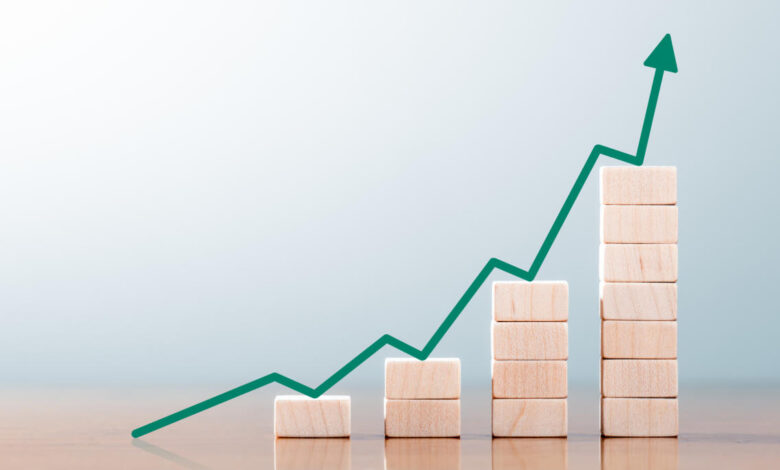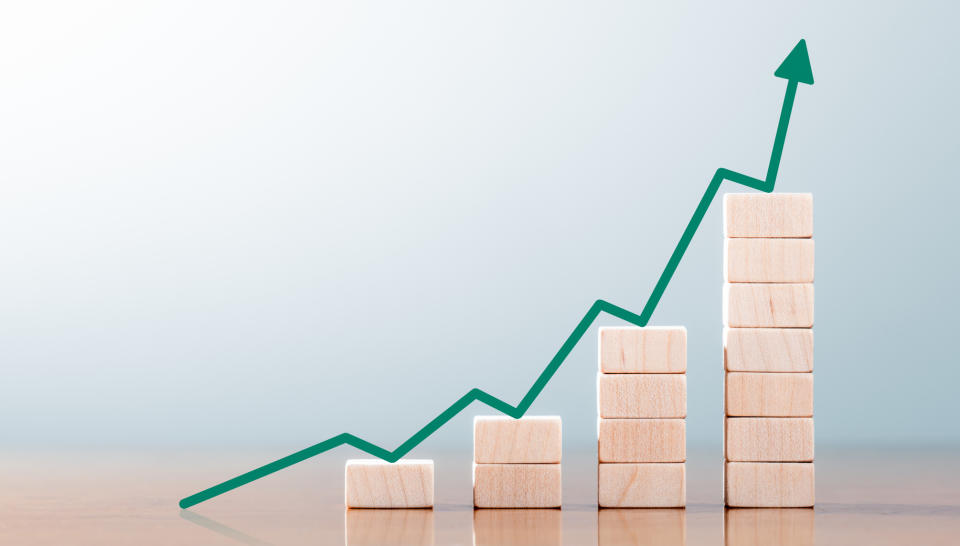The Nasdaq Just Did Something It Has Done Only 5 Times Before. History Says a Big Move in Stocks Could Follow in 2024

[ad_1]

The Nasdaq Composite (NASDAQINDEX: ^IXIC) is an index comprising about 3,500 stocks, many of which come from the technology and consumer discretionary sectors. To that end, the Nasdaq is often considered a benchmark for growth stocks because many of its components are on the cutting edge of various technologies and consumer trends, such as artificial intelligence, cloud computing, cybersecurity, and e-commerce.
Investors rotated away from growth stocks as post-pandemic inflation scorched the economy. The Nasdaq tumbled deep into bear market territory in 2022, falling as much as 36% from its high.
That drawdown was largely driven by recession fears arising from aggressive monetary policy. Specifically, the Federal Reserve has battled inflation by raising its benchmark interest rate at its fastest pace since the 1980s. Many economists feared (and some continue to fear) that policymakers could trigger a recession by tightening credit conditions too quickly.
However, the Nasdaq shook off those fears and moved higher last year as signs of economic resilience and excitement about artificial intelligence improved market sentiment. The index soared 43.4% in 2023, one of its best performances in history. Prior to that, the Nasdaq had achieved an annual gain exceeding 40% only five times since its inception in 1971.
Historically, annual gains exceeding 40% have portended more upward momentum in the Nasdaq. Of course, investors should never put too much weight on such forecasts simply because each situation is unique. The last few years have been defined by fallout from a global pandemic, and there is no precedent for such an event. Even so, historical patterns are still worth consideration. Here’s what investors should know.
History says the Nasdaq could move higher in 2024
The Nasdaq Composite returned 43.4% in 2023, marking the sixth time the index has increased more than 40% in a calendar year. The chart below shows the last five events and details the Nasdaq’s return 12 months later.
|
Year |
Nasdaq Return |
Nasdaq Return (12 Months Later) |
|---|---|---|
|
1991 |
56.9% |
15.5% |
|
1999 |
85.6% |
(32.3%) |
|
2003 |
50% |
8.6% |
|
2009 |
43.9% |
16.9% |
|
2020 |
43.6% |
21.4% |
|
Median |
|
15.5% |
Data source: YCharts.
As shown above, the Nasdaq has returned a median of 15.5% during the 12-month periods following an annual gain exceeding 40%. To add context, the Nasdaq has ticked down about half a percentage point this year, so the implied upside is about 16% through the remainder of 2024.
Investors should view that number as little more than a guess. The combination of a global pandemic, the fiercest inflation in four decades, and aggressive interest rate hikes make the current situation unique. As such, the Nasdaq may not perform as historical data suggests. But there is one more pattern investors may find interesting.
The Federal Reserve may be done raising interest rates
The Federal Reserve has hinted that its rate-hiking campaign may be over. In fact, the latest projections from policymakers imply three 25-basis-point rate cuts in 2024. Futures investors are even more optimistic. The CME Group‘s Fed Watch tool — which uses pricing data from futures contracts to estimate the probability of future rate hikes and cuts — currently shows a 70% chance of at least six 25-basis-point cuts in 2024.
If credit conditions indeed loosen in the coming year, that shift in monetary policy would promote borrowing and spending among businesses and consumers. In turn, that should lead to robust economic expansion and strong growth in corporate revenues and profits. Investors get excited by those prospects, so the Nasdaq has historically risen sharply following the end of interest-rate-hike cycles.
To elaborate, the Federal Reserve has guided the economy through six rate-hike cycles since 1983. The Nasdaq returned a median of 20% during the 12-month period following the last rate hike in those cycles. For context, the Federal Reserve last increased its benchmark rate on July 27, since which time the Nasdaq has advanced 6%. That leaves implied upside of roughly 14% through July 2024.
Of course, that presupposes that the Federal Reserve is indeed done raising interest rates. But that outcome is not guaranteed. Inflation actually reaccelerated to 3.4% in December, up from 3.1% in November, so policymakers could ultimately decide to tighten credit conditions further.
Patience is key to making money in the stock market
Investors should avoid strategies based on market timing. Not even the smartest economists and Wall Street strategists know what the year ahead will bring. Some pundits are forecasting the worst crash in decades, while others see only a modest risk of recession. But those concerns become less pressing with a long-term mindset.
The Nasdaq fell 56% during the bear market that accompanied the Great Recession, and it took more than three years for the index to regain its record high. But the Nasdaq has still gained 424% since the drawdown started. In other words, investors who bought a Nasdaq Composite index fund the day the bear market began have still seen annualized returns of 10.8% during the last 16 years.
The lesson here is simple: Patience is the key to making money in the stock market. Investors who buy individual stocks should carefully research each company before buying shares, paying close attention to growth prospects and valuation.
Companies primed to benefit from artificial intelligence are a good place to start. That includes software vendors like Microsoft (NASDAQ: MSFT) and Datadog (NASDAQ: DDOG), cloud services providers like Amazon (NASDAQ: AMZN) and Alphabet (NASDAQ: GOOGL) (NASDAQ: GOOG), and chipmakers like Nvidia (NASDAQ: NVDA) and Broadcom (NASDAQ: AVGO). Those companies are members of the Nasdaq Composite, and all but Datadog rank among its 10 largest components.
Alternatively, investors can save themselves some work with an index fund strategy, either in lieu of or in addition to individual stocks. A Nasdaq Composite index fund like the Fidelity Nasdaq Composite ETF (NASDAQ: ONEQ) would tap directly into the Nasdaq’s returns. Investors should also consider an S&P 500 index fund like the Vanguard S&P 500 ETF (NYSEMKT: VOO). Warren Buffett has often recommended that strategy. But no matter the strategy, patience is the key to making money.
10 stocks we like better than Walmart
When our analyst team has an investing tip, it can pay to listen. After all, the newsletter they have run for over a decade, Motley Fool Stock Advisor, has tripled the market.*
They just revealed what they believe are the ten best stocks for investors to buy right now… and Walmart wasn’t one of them! That’s right — they think these 10 stocks are even better buys.
*Stock Advisor returns as of 1/8/2024
John Mackey, former CEO of Whole Foods Market, an Amazon subsidiary, is a member of The Motley Fool’s board of directors. Suzanne Frey, an executive at Alphabet, is a member of The Motley Fool’s board of directors. Trevor Jennewine has positions in Amazon, Nvidia, and Vanguard S&P 500 ETF. The Motley Fool has positions in and recommends Alphabet, Amazon, Datadog, Microsoft, Nvidia, and Vanguard S&P 500 ETF. The Motley Fool recommends Broadcom and CME Group. The Motley Fool has a disclosure policy.
The Nasdaq Just Did Something It Has Done Only 5 Times Before. History Says a Big Move in Stocks Could Follow in 2024 was originally published by The Motley Fool
Source link




